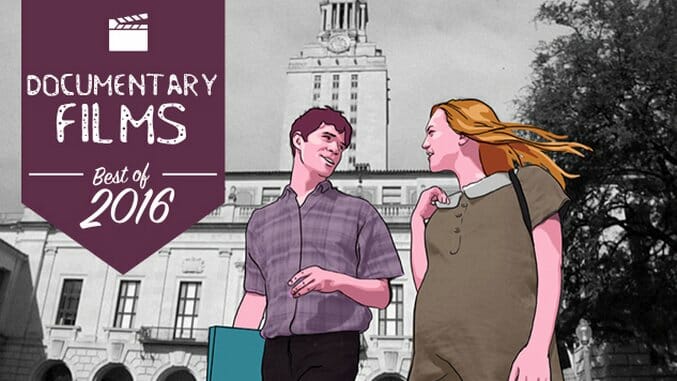
2016 hasn’t been the most uplifting of years for documentary film—but such films will often reflect the times in which they’re made. Of our 15 favorite documentaries of the year: Five deal with tragedy, both personal and public; three deal with our country’s continuing struggle with civil rights; and our favorite documentary of the year is an unflinching look at the forgotten of American society, a group that has fallen behind in the pursuit of the American Dream. They weren’t always the most fun films to watch, but each of them informed, challenged and, in a way, inspired us.
Here are our favorite documentaries of 2016.
15. Tower
Director: Keith Maitland
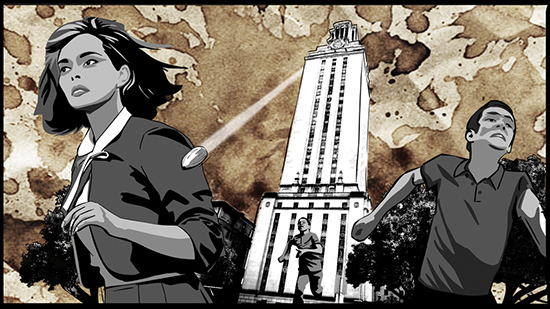
The 1966 University of Texas clock tower shooting ought to be a footnote in American history and not a reference point for contemporary national woes. That Tower, documentary filmmaker Keith Maitland’s animated chronicle-cum-reenactment of that massacre, should feel as relevant and of the moment as it does, then, is startling, or perhaps just disheartening. It was 50 years ago this past August that Charles Whitman ascended the university tower with a cache of guns, killed three people inside, and went on to kill another 11 plus an unborn baby over the course of an hour and a half. Back in those days, a public act of violence on this level was an anomaly piercing the veil of our sense of security. Today, it’s just Sunday. Tower wraps the horror Whitman wrought in a rich, rotoscoped blanket, the vibrancy of Maitland’s palette lending urgency and vitality to the horror he and his cast recreate on screen. —Andy Crump
14. Peter and the Farm
Director: Tony Stone
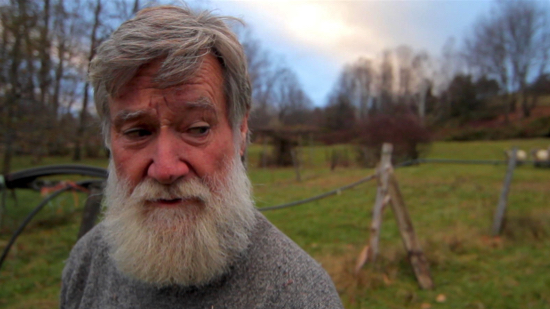
If the success of a character study can be measured purely by the extent to which the character him-/herself draws one’s attention, then Peter and the Farm is surely one of the most successful of recent years. On the surface, beyond his long white beard, there isn’t anything extraordinarily distinctive about Peter Dunning, a solitary farmer who has devoted 35 years of his life to tending his farm in Vermont, and whose lonely existence masks deep psychological scars underneath. Even his traumas are fairly mundane: estrangement from his ex-wives and kids, curdled hippie idealism, a hand accident that ended his artistic dreams. And yet, once you hear Peter speak in his dramatically galvanizing voice, one can’t help but sit up and pay attention to whatever cantankerous, world-weary, brutally candid statements he utters. However you take Peter Dunning, though, there is something admirable to the way Tony Stone and Co. view their subject with a fascination that’s filled with clear-eyed empathy. It’s the kind of unsentimental compassion that animates the best art. —KF
13. Tony Robbins: I Am Not Your Guru
Director: Joe Berlinger
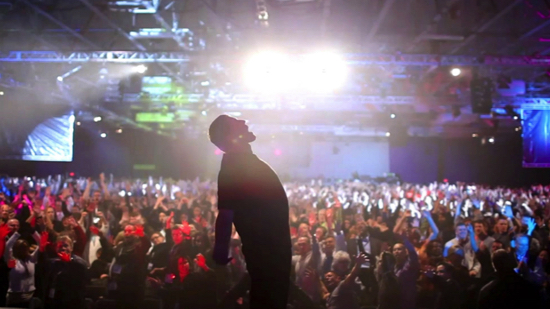
There are oh so many interesting documentaries that could have been made about Tony Robbins. You can just imagine Alex Gibney mercilessly burrowing into the brains of Robbins’ associates to find nuggets of implicating evidence, or Michael Moore chasing down former seminar attendees to ask if all their problems have been solved, or Ondi Timoner adding to her collection of masterpieces about tortured geniuses. Instead, Joe Berlinger chooses to take us inside one of those exclusive multi-day seminars, showing us the team that makes it happen, the attendees that provide the grist for the mill and, most fascinating, Robbins himself. It’s enough: Robbins is so easy to stereotype and caricature that it takes a bit of direct contact with him (through the lens of course) to begin taking him on his own terms. Who wouldn’t want to experience a couple of days of walking around behind the scenes at an event, speaking with Robbins and his team while witnessing his work with the people who have come (and paid quite a bit of money) to hear him? This direct approach failed to impress critics who may’ve wanted a more polemical piece, but Berlinger falls directly in the tradition of the Maysles brothers and D.A Pennebaker by asking us, first, to simply see the man and his work for exactly what they are. —Michael Dunaway
12. Under the Sun
Director: Vitaliy Manskiy

For as long as there have been documentaries, there have been debates about what exactly constitutes “reality” in those films. Labeling these movies as nonfiction has always been misleading—just because you’re capturing “real” people doing “real” things doesn’t mean you’re necessarily presenting an unfiltered representation of real life. The terrific documentary Under the Sun doesn’t just bring these questions to light but makes them part of the film’s central focus. Daring and thought-provoking, director Vitaly Mansky’s film uses one North Korean family to examine how everyone—moviemakers, governments, even individuals—contorts reality to fit specific purposes. And Under the Sun keeps forcing us to ponder why we watch representations of real life and what we think we’re learning about reality in the process—especially when, like in this film, much of it has been scripted for the purpose of advancing a specific agenda. —Tim Grierson
11. The Prison in Twelve Landscapes
Director: Brett Story

Empathy is at the forefront in The Prison in Twelve Landscapes, director Brett Story’s masterful collection of vignettes. There’s no central figure, Story instead using her snapshots of different individuals to suggest something grander—namely, Americans’ inescapable entanglement with their country’s prison system. With so many different stylistic techniques—sometimes her subjects address the camera directly, sometimes we’re a fly-on-the-wall observing people from a distance talking to each other—The Prison in Twelve Landscapes may risk didacticism, but such worries are mitigated by Story’s aesthetic adventurousness.
There’s a cumulative power, a headlong rush, in watching one vignette segue into another, the viewer trying to make connections between seemingly dissimilar American portraits. The Brooklyn man who started a business that ships penitentiary-approved goods to inmates, the Detroit P.R. rep who has no idea how slimy he sounds, the St. Louis County resident waiting in long lines—Story deftly makes the point that they’re all invisibly part of the same system, and the juxtaposing, sometimes counterintuitive correlations enliven each snapshot and make The Prison in Twelve Landscapes stronger collectively than in any one sequence. Other filmmakers would mount a frontal assault on the classism and racism rampant in the way we lock up so many people, but Story doesn’t want us to watch the usual images and absorb the normal statistics. She’s asking us to see the dilemma in a new light, and her powerful essay film never stops making us queasy—and, at the same time, alive with anger and sorrow that the dilemma is being communicated so forcefully and innovatively. —TG
10. Kate Plays Christine
Director: Robert Greene
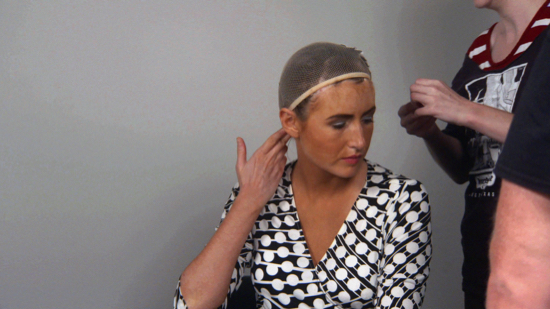
This film operates under a fake conceit: Actress Kate Lyn Sheil (who appeared in Listen Up Philip and Queen of Earth) is preparing to star in a biopic about Christine Chubbuck, a Florida TV journalist who committed suicide by shooting herself in the head on-air in 1974, and Greene will follow her as she does background research for the project. But there actually is no biopic being made; Greene and Sheil film intentionally cheesy-looking scenes from their bogus movie, which are intercut with Sheil’s real conversations with Chubbuck’s former coworkers and, in one particularly excellent scene, a local gun dealer.
Actress, about actress Brandy Burre as she prepares for a comeback after years away from the business, dove deep into the ways our lives are actually just a series of roles—mother, daughter, lover, young, old—and Kate Plays Christine is also captivated by our ability (and our need) to create different guises. But this time, Greene wants to include us in his interrogation. The documentary fixates on Chubbuck’s suicide—the footage of which has been locked away for the last 42 years—but, more accurately, fixates on why an actress (or an audience) would want to relive such a horrific, traumatic act.
Kate Plays Christine builds and builds to a finale in which Sheil must make the decision of how she will “perform” Chubbuck’s violent end, and while I won’t reveal the resolution, it most forcefully asks the question so documentaries this year ponder: What are you looking at? —TG
9. Weiner
Directors: Josh Kriegman, Elyse Steinberg
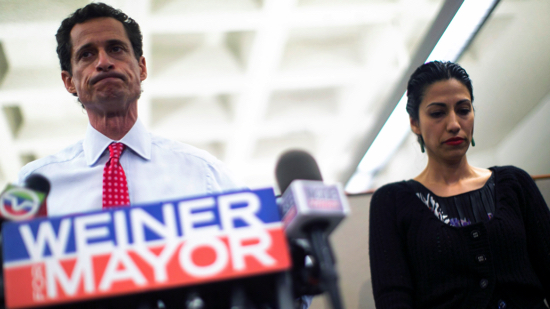
“Why did you let me film this?” This simple question, posed at the end of Josh Kriegman and Elyse Steinberg’s Weiner, is as baffling to the movie’s subject as it is to everyone else. Anthony Weiner gave a documentary crew incredible behind-the-scenes access to his 2013 New York mayoral campaign while his political career crumbled and his personal life turned to a shambles. If the filmmakers had an agenda besides studying Weiner’s character, they did a great job of hiding it. Weiner shows many facets of his personality: He can be charming and funny, but he can also be a petulant, entitled jerk. The veneer wears off as the stress mounts, making things increasingly uncomfortable—it’s excruciating to watch this man try to salvage respect from certain humiliation, but it makes for a devilishly intimate look into the madness of modern politics. —Jeremy Mathews
8. Miss Sharon Jones!
Director: Barbara Kopple

In 2013, Sharon Jones was diagnosed with Stage 2 pancreatic cancer—in itself a depressing development, but not without a lot of optimism attached to the prognosis. Except for a by-the-book opening segment, in which director Barbara Kopple seems to grind through all of her blandest tendencies to make room for the grist of what’s important, the film filters Jones’s life and career through her illness. We meet Jones’s band, the Dap-Kings, through that lens, getting to know each musician in light of how their friend’s illness has unfortunately affected their livelihoods. They have mortgages and alimony to pay, children to support, a record label to run. That all of this, already precariously balanced due to the nature of the music-making business, is so dependent on Jones’s health becomes a shadow hanging over every interview. When band practices are occupied by 10+ people sitting patiently in a room waiting for Jones to get back into her groove or helping the singer remember the lyrics to her songs, Kopple’s film is heartbreaking, walking that tragic line between hopelessness and optimism, encapsulating so clearly what it’s like to be close to someone who’s so sick.
But the real thrill of Miss Sharon Jones! is in its concert footage, Kopple letting Jones’s performances, old and new, suffice as the best testament to the singer’s power and—unbeknonwst to anyone at the time, though the thought must have crossed their minds incessantly—the most immediate eulogy we’ve got. If you ever had the chance to behold her on stage, then you know how exhilarating she can be. If you hadn’t? Despite recent tragedy, Kopple has some seriously life-affirming stuff you need to see. —Dom Sinacola
7. 13th
Director: Ava DuVernay
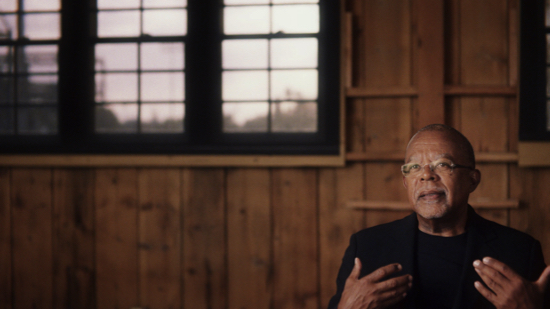
Director Ava DuVernay has successfully made a documentary that challenges and even dismantles our collective understanding of one of the most dangerous notions of our time: “progress.” How do we define progress, and who precisely gets to define it? 13th, now streaming on Netflix, is a captivating argument against those who measure progress with laws that pretend to protect American citizens and amendments, and even to uphold the Constitution. It is a deftly woven and defiant look at how clauses within those amendments (specifically the lauded 13th) and the language of our political system both veil and reveal a profound and devastating truth about America: Slavery was never abolished here, DuVernay and the participants in the film argue. It was simply amended, and it continues to be amended in 2016, with the constant evolution of the criminal justice system. It’s a bold and terrifying statement to make, but in using a documentary instead of, say, a narrative film, DuVernay is able to point directly to that history and to those people who have defined “progress” for black Americans. In doing so, she draws a line directly from the 13th amendment, to today’s America, which has the highest rate of incarceration in the world. Like some of the best documentaries of our time, 13th is not just a film, but a demand; it’s a call to reject dangerous reiterations, specifically newer and newer Jim Crows. DuVernay’s work doesn’t expressly name what we might build in their place, but it demands that those of us watching resist the seduction of sameness disguised as slow progress, and imagine something: actual freedom. —Shannon Houston
6. Cameraperson
Director: Kirsten Johnson
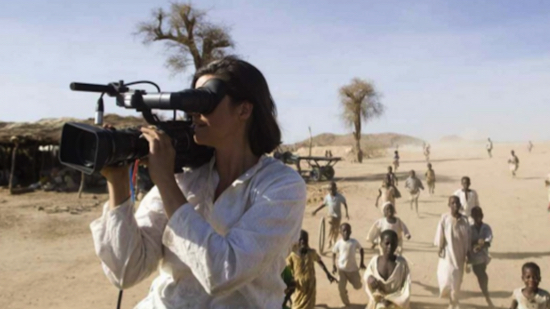
Kirsten Johnson’s title for her latest documentary feature could not be any more nondescript. And yet, the anonymity of that title points to perhaps the most remarkable aspect about this film: its maker’s sheer selflessness, her devotion to her craft and her subjects, her seemingly complete lack of ego. The film is pieced together from outtakes from the long-time documentary filmmaker/cinematographer’s extensive body of work, but beyond occasionally hearing her voice behind the camera (and one shot towards the end in which we finally see her face as she points the camera toward herself), Johnson forgoes the safety net of voiceover narration to tie all this footage together. The footage speaks for itself, and for her. Which is not to say that the film is just a compilation of clips strung together willy-nilly. Johnson breathes an animating intelligence into Cameraperson’s construction, employing a method that suggests a mind processing one’s life experiences, contemplating the sum total of her work, veering off into tangents whenever she happens upon a piece of footage that triggers broader reflections. It’s a measure of Johnson’s overall humility that she is willing to be as brutally honest about herself with the viewers in this way—and it’s that humility that ultimately makes Cameraperson such an inspiring experience. —KF
5. Notfilm
Director: Ross Lipman
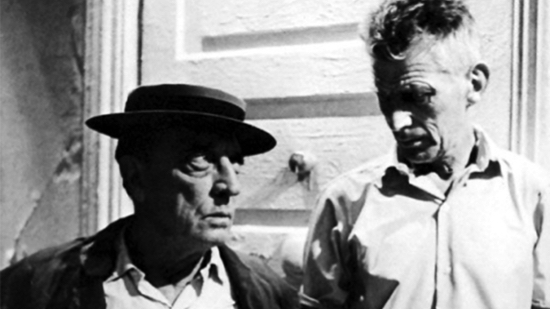
Some movies are the happy accident of mismatched collaborators who, against the odds, produce a masterpiece forged in the fire of their creative clash. Then you have Film, a misbegotten 1965 avant-garde short put together by famed playwright Samuel Beckett and desperate-for-a-paycheck Buster Keaton. In the revelatory documentary Notfilm, director Ross Lipman excavates this little-remembered curio, talking to everyone from cinematographer Haskell Wexler to film historian Leonard Maltin to create a mosaic about celluloid, thwarted ambitions and the reasons why movies still enrapture us after so many years. This is a gift for film-lovers, even if you’re not a Film-lover. —TG
4. O.J.: Made in America
Director: Ezra Edelman
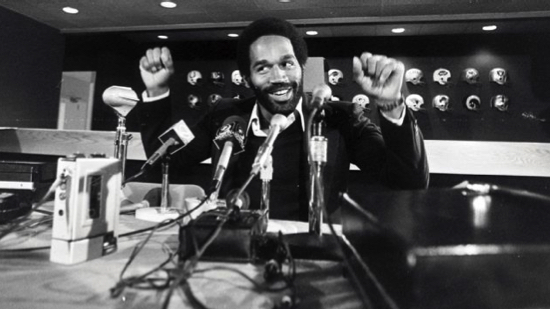
ESPN’s newest installment in its 30 for 30 series is its most ambitious, transcending superficial descriptions such as “entertaining” to get at something deeper, richer, truer. But if you’re conversant with the structure of earlier 30 for 30s, it’s also pleasingly familiar. O.J.: Made in America clocks in at seven-and-three-quarter hours, but it breezes by. The film encapsulates 30 for 30 at its best: It’s endlessly riveting, smartly packaged and exceedingly intelligent. And most important of all, the nearly eight-hour O.J. makes a pretty convincing case to non-sports fans why the rest of us invest so much emotional energy into the exploits of men playing children’s games. Sports are never just sports—they’re an extension of the race and class issues we experience on a daily basis. O.J. Simpson symbolized something powerful in our collective unconscious. And as this movie demonstrates, his fall from grace was partly ours. —TG
3. Voyage of Time
Director: Terence Malick
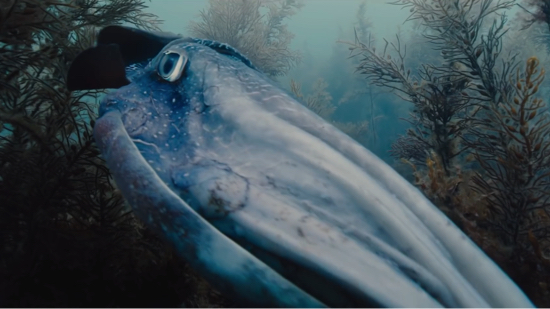
For a dose of some real perspective on the incomprehensibility of the past couple months, Terence Malick’s Voyage of Time (the long version narrated by Cate Blanchette is better than the Brad Pitt-voiced 60-minute cut) will reduce your ego to a sniveling speck. Birthed from the 20-minute sequence splitting The Tree of Life in two, Malick partners phantasmagoric CGI with digital footage of addicts scuffling amidst urban detritus and the Arab Spring in medias res. It’s an overblown film, as big as its ideas, as audacious as it is beautiful, saved by the clarity with which Malick puts no pressure on his audience to garner any sort of agenda from the depths of the filmmaker’s philosophical mind. As the literal “Story of Our Universe,” Voyage of Time is as pregnant or as bereft of salient ideas as you want it to be: Life is symmetry; everything that rises must converge; consciousness destroyed the innocence of our baser animal instincts; drugs are bad; whatever. If, in the wake of an election which revealed the worst in American politics, writing about American film felt at its most futile, then we need the cold shower of one of our greatest living American filmmakers to confirm that futility. “See,” Malick says in each mythical narrative phrase and magnificent, cosmic visual, “You really don’t matter.” —DS
2. One More Time With Feeling
Director: Andrew Dominik
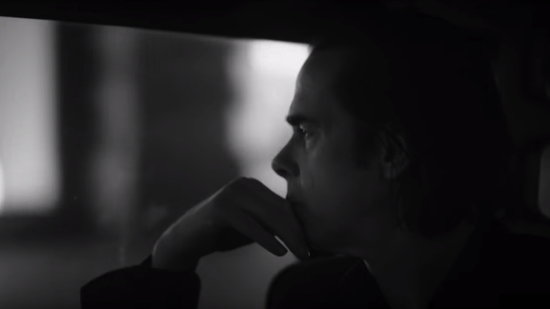
If you’re a longtime fan of Nick Cave, if you’re a father, or even if you just have some modicum of human empathy, One More Time With Feeling is going to be a very, very hard watch. In 2015, Cave’s 15-year-old son Arthur, under the influence of LSD, fell from a cliff and died—a tragedy that pervades every note on Cave’s new album Skeleton Tree. Understandably reluctant to publicize the album and subject himself to talking about the tragedy over and over, Cave agreed to let his friend and collaborator Andrew Dominik (The Assassination of Jesse James by the Coward Robert Ford) film a documentary about the making of the record instead. Dominik shot in the unusual combination of 3-D and black and white, and as more than one reviewer noted, the effect is ghostly. Which would be appropriate for any film about Cave, but especially this one. It’s a devastating, gorgeous journey into a prolonged (permanent?) existential crisis. —MD
1. The Other Side
Director: Roberto Minervini

Director Roberto Minervini has crafted a nonfiction narrative in the thick of the Louisiana swamp, drawing on locals to tell a bifurcated story that both exploits liberals’ fears of what the “other” America looks like and constructs a compassionate, clear-eyed account of those who are being left behind economically and culturally. Mark Kelley, like everyone else in the documentary/fiction hybrid The Other Side, is playing a version of himself, living as an ex-con battling addiction without any meaningful job prospects. Lisa Allen is his girlfriend, and she seems awash in her own troubles: Everywhere you look in The Other Side, there are burned-out trailers, unhappy people, rural poverty and a general sense of anxiety and resentment.
Not unlike Harmony Korine, Minervini (who was born in Italy but lives in the U.S.) is fascinated by the great, unadorned vitality of America’s back roads and lurid subcultures. The Other Side’s first half is an intimate character drama concerning Mark and Lisa, but its second section feels like a Southern-fried version of Korine’s Trash Humpers mixed with the reckless abandon of Spring Breakers. We see wet-T-shirt contests and drunken days at the beach amidst a collection of random revelers. We also observe a meeting of what appears to be a local militia group that’s fiercely anti-Obama, the men expressing their rage at the country’s direction by blowing a car to smithereens with their high-octane weapons.
Minervini’s film contains scenes that feel fly-on-the-wall, while others have clearly been rehearsed and scripted. If he was trying to mock these people, that line between fiction and reality might have been more uncomfortable, but The Other Side is actually a deeply empathetic portrait. It obviously has its share of cultural dog-whistling—the whole movie could be a cinematic illustration of the economically disenfranchised voters Obama was referring to in 2008 on the campaign trail when he said, “…they get bitter, they cling to guns or religion or antipathy to people who aren’t like them or anti-immigrant sentiment or anti-trade sentiment as a way to explain their frustrations”—but The Other Side brings this world to such vibrant life so that we can see these people’s pain, and, perhaps, even understand the rage and violence swirling around them. The Other Side has been made by an outsider who refuses to shy away from other outsiders’ humanity. In an election year dominated by anger and disillusionment, the movie isn’t some freak show but, instead, an incredibly moving, undeniably frightening articulation of why so many in America want to blow the whole thing up and start all over again. —TG